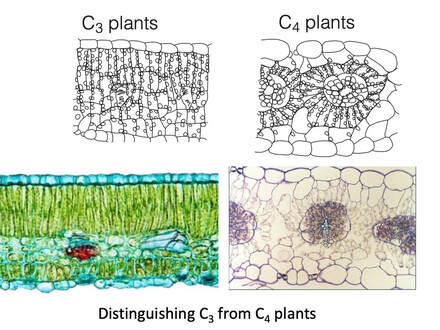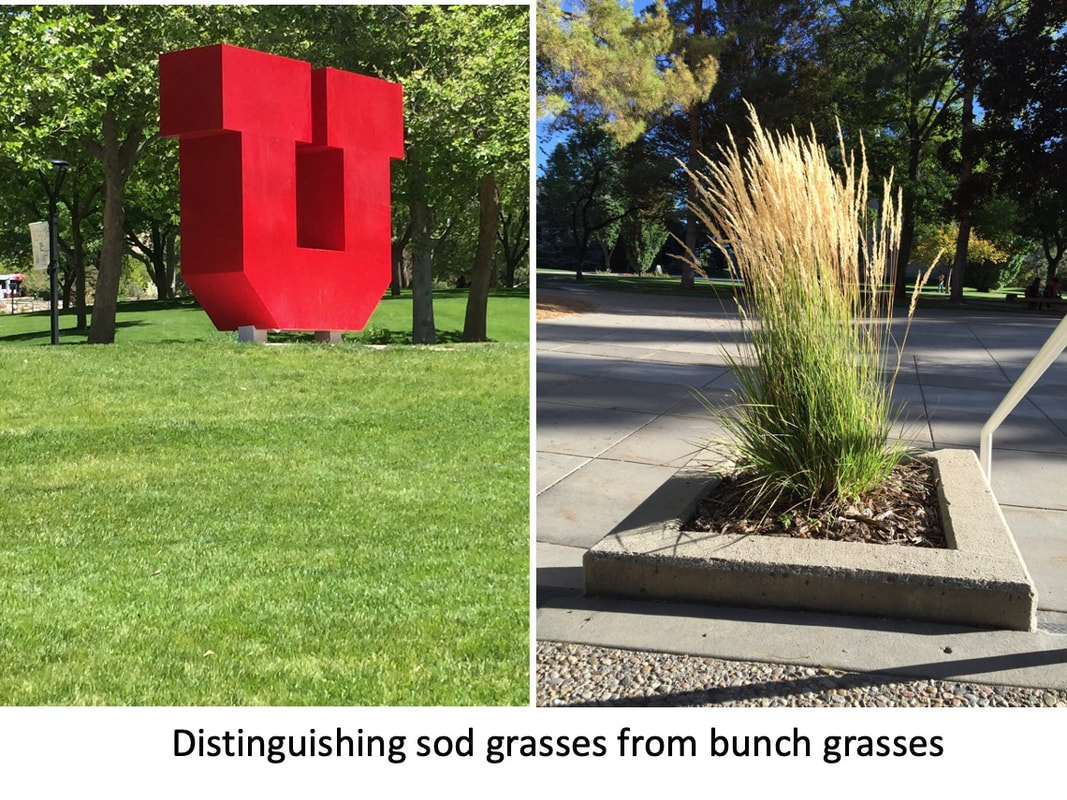C3 and C4 grass species
On our campus, you will find both planted C3 and C4 grasses, native C3 and C4 grasses, as well as invasive C3 and C4 grass species. Perhaps the most obvious grasses on campus are the lawns, which are predominantly Kentucky bluegrass (Poa pratensis).
|
One way to distinguish C3 and C4 photosynthetic pathways of leaves is with a hand lens (I presume all field biologists walk around with a hand lens). To determine the pathway for a particular leaf, pick a leaf and pull it apart to create a visible cross section. With a 10x hand lens, look at the cross section. If the cross section is green throughout, then it is a C3 leaf (as shown above). If instead you see darker green spots in a background of pale green, then it is a C4 leaf (as shown above). A more sophisticated way is to measure the leaf carbon isotope ratio back in the laboratory.
|
Grasses on campus lawns are called sod-forming grasses or turf grasses. They grow horizontally, sending out stolons at or below the soil surface and forming an extensive network of below ground roots. That below ground mass is referred to as sod. Native sod grasses include Bouteloua curtipendula (side-oats grama) and Distichlis spicata (salt grass). In contrast, bunch grasses do not have well-developed stolons and therefore appear as tufted grasses. Most of our native grasses are bunch grasses, including Oryzopsis hymenoides (indian ricegrass) and Stipa comata (needle-and-thread grass)
|

